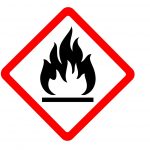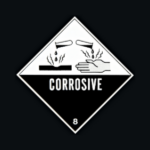Consumer Chemical Labels: Can You Combine Canadian and US Labels?
By: Sarah D’Mello, B.SC., SENIOR PRODUCT SAFETY SPECIALIST, email
What is a Chemical Consumer Product?
A consumer product is a manufactured good purchased for non-commercial purposes. In other words, consumer products are purchased for personal or household use. Chemical consumer products contain ingredients that are regulated for their impacts on human and environmental health. These are common items you will find on the shelves of a retail store. Examples include dishwashing detergent, cleaners, air fresheners, paints, and mechanical lubricants.
Consumer products do not include products that require specific registrations, such as drugs, cosmetics, disinfectants, pesticides, and natural health products. For assistance with registering a product in one of these categories, visit our Regulatory Affairs service page.
Now let’s take a closer look at chemical consumer products, specifically labelling requirements in Canada and the United States. By the end, we will have answered your question, ‘Can you combine Canadian and US labels’?
Why Do Consumer Chemical Products Require Their Own Regulation? What About GHS?
Consumer products are sold and used in different environments than workplace products. For this reason, separate regulations address the hazards that may be unique to each setting. For example, toxic consumer products may require child-resistant packaging, which would not be necessary in a workplace.
GHS is the international standard used to regulate workplace products. GHS has its own hazardous material classification systems, uses a distinct set of test methods, and employs unique labeling schemes. Average consumers are not trained to understand GHS labels. This is why we have consumer regulations: to protect consumers by informing them of a product’s potential hazards.
GHS and consumer regulations should not be used interchangeably.
Canada vs. the USA
Canadian consumer products are regulated under the CCCR 2001 (Consumer Chemicals and Containers Regulations, 2001) which falls under the Canada Consumer Product Safety Act. American consumer products are regulated under the Consumer Product Safety Commission.
CCCR – Canada
CCCR 2001 has five main regulated classifications:
- toxicity
- flammability
- corrosivity
- quick skin-bonding adhesives
- pressurized containers
CCCR 2001 is very prescriptive. The regulations outline the following components:
- test methods
- classification procedure
- label formatting
- label requirements (hazard symbols, warning statements, first aid instructions, etc.)
- print specifications (e.g. minimum allowable text size)
- special exemptions
Health Canada published a CCCR 2001 Reference Manual which contains information on the enforcement of CCCR 2001 and provides a more in-depth discussion on various parts of the regulation.
CPSC – United States
Under the Federal Hazardous Substances Act (FHSA) and Poison Prevention Packaging Act (PPPA), hazardous consumer products may be:
- toxic
- corrosive
- an irritant
- a strong sensitizer
- flammable
- combustible
- any combination of the above
CPSC (Consumer Product Safety Commission) regulations for labeling requirements include:
- a signal word
- an affirmative statement of the principal hazard
- precautionary measures
- first aid instructions
- handling and storage statements
The language used is not formally prescribed; however, the CPSC has special labeling requirements for products containing specific substances, such as diethylene glycol at 10% or more by weight. The list can be found in 16CFR 1500.14.
Differences between CCCR and CPSC
The most prominent difference between the two countries’ consumer labeling regulations is the requirement for bilingual (French and English) labeling in Canada. Additionally, CPSC includes a category for chronic hazards such as sensitizers and carcinogens, whereas CCCR 2001 does not. The two regulations also calculate type size differently. Finally, CCCR 2001 uses a variety of symbols, compared to the one (skull and crossbones) used by CPSC.
Can I Combine The Two Into A Single US and Canadian Label?
Combining Canadian and US chemical consumer labels can be a complex undertaking due to the differences in regulations and standards between the two countries. Each country has its own set of requirements for labeling products, which are designed to ensure consumer safety and provide accurate information. While it may be tempting to merge the labels to streamline the packaging and distribution process, there are several factors to consider: regulations, pictograms, testing and language.
Regulations
In Canada, consumer chemical products are regulated by the Consumer Chemicals and Containers Regulations, 2001 (CCCR) under the Canada Consumer Product Safety Act. Health Canada monitors the safety of consumer products through inspections and ensuring the industry is following the Act and its regulations by promoting and enforcing compliance.
In the US, the Consumer Product Safety Commission (CPSC) protects the public from unreasonable risks of serious injury or death. CPSC administers and enforces a number of laws, including the Consumer Product Safety Act (CPSA), the Federal Hazardous Substances Act (FHSA) and the Poison Prevention Packaging Act (PPPA).
It is essential to understand the specific labelling regulations of both countries for consumer chemical products. These regulations have distinct guidelines regarding the format, content, and placement of consumer labels.
Pictograms
For Canada, almost all classifications have a pictogram that will need to be listed on the label. Pictograms are rarely used in US consumer labelling. Including pictograms on US products may confuse the general public.
Testing
Both Canada and the US have different testing procedures, ingredient restrictions, or product specifications. Ensuring compliance with the regulations of both countries can be time-consuming and may involve additional costs, such as conducting separate testing or modifying formulations to meet each country’s standards.
Language
Canada requires bilingual labeling, English and French, on product labels. In the US, Spanish translations may be necessary in certain regions or for specific products but not required. Dell Tech provides technical translations for English, Canadian French and Standard Spanish.
Combining Canadian and US consumer labels requires a comprehensive understanding of the regulations, standards, and linguistic requirements of both countries. Consulting with experts is advisable to ensure compliance.
Dell Tech’s product safety team can review your product formulation and determine the correct labelling for your chemical consumer products.
Dell Tech has provided professional, confidential consulting services to the specialty chemical
industry in Canada, the USA, Europe, and Asia for the last 40 years.
Contact us today for more information.
www.delltech.com





